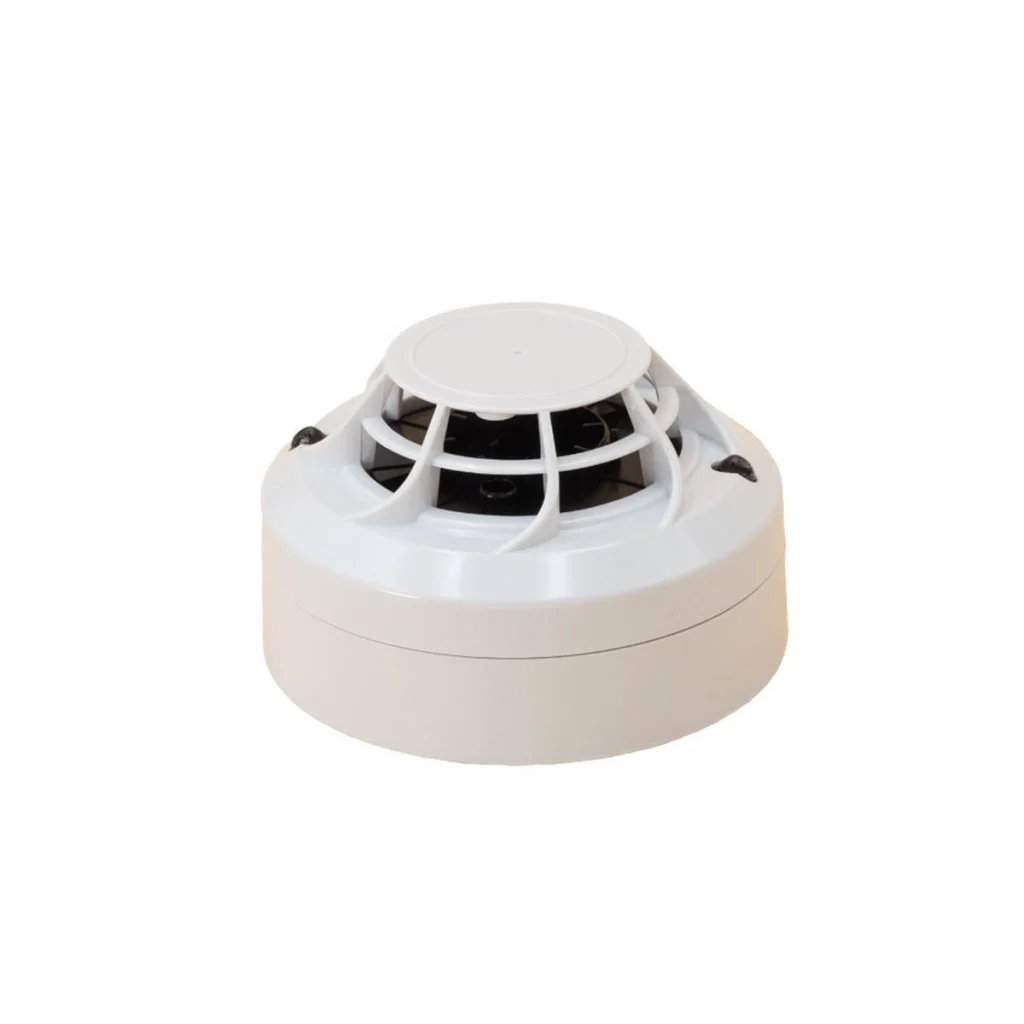
Heat detectors are vital fire safety devices designed to detect changes in temperature, providing early warnings of potential fires. Unlike smoke alarms, these sensors respond specifically to heat, making them ideal for environments such as kitchens, garages, and industrial areas where smoke detection may not be reliable. Combined with Flame Detectors and Gas Detectors, heat detectors are crucial components of a comprehensive fire and safety system, offering enhanced protection by detecting fires early.
Heat detectors are engineered for environments where smoke detectors might be prone to false alarms. Here are some key features that enhance their reliability:
These devices are versatile and used across various environments to enhance fire detection and safety:
In residential settings, heat sensors are commonly installed in areas like kitchens, attics, and garages, where smoke alarms might trigger false alarms. These devices provide reliable fire detection without the nuisance of false alerts caused by cooking smoke or dust.
In commercial kitchens, these detectors are essential for identifying fires that could start in cooking appliances or due to grease buildup. Their ability to withstand high temperatures and avoid false alarms from cooking fumes makes them ideal for these environments.
In industrial settings, these sensors are used to detect fires in areas with heavy machinery or materials that could pose a fire risk. Their robust construction allows them to operate effectively in dusty, humid, or high-temperature environments, providing reliable fire detection under challenging conditions.
In storage and warehouse facilities, heat detectors help protect inventory from potential fire damage. These devices can detect fires early, preventing them from spreading and minimizing loss while ensuring a quick response.
In garages and workshops, where vehicles and equipment could potentially catch fire, these sensors provide early warnings. Their design reduces the risk of false alarms from vehicle exhaust or workshop dust, ensuring accurate and timely detection.
Heat sensors offer several benefits that make them an essential part of any fire safety strategy:
These devices are designed to function effectively in environments where smoke detectors may not be reliable, such as areas with high dust, humidity, or smoke. This reliability ensures that fires are detected promptly, even in challenging conditions.
By focusing on temperature changes instead of smoke, these detectors significantly reduce false alarms, which is particularly useful in kitchens, garages, and industrial settings where smoke and fumes are common.
These detectors can be installed in a variety of locations, including areas unsuitable for smoke alarms. This flexibility allows for comprehensive fire detection coverage throughout a property.
Compared to smoke alarms, heat sensors require less maintenance as they are less prone to false alarms from environmental factors. Regular testing and occasional battery replacement are usually all that is needed to keep them effective.
Compatible with most fire alarm systems, these devices can easily integrate into broader safety strategies. This integration ensures that all potential fire hazards are covered, providing a more comprehensive safety solution.
Proper installation and usage are key to maximizing the effectiveness of heat detectors in fire safety systems. Here are some tips for optimal performance:
Enhance your fire safety with dependable heat sensors. Contact us today for a quote or visit our website to learn more about how these devices can improve your protection strategy. Our team is ready to help you choose the best solution tailored to your needs.